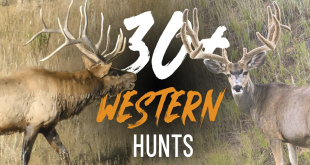
It’s no secret that much of Utah is struggling with drought. The last four years have been tough and conditions have been subpar for fawn recruitment. DWR counted 35,700 mule deer back in December which is down over 9,100 from last year and some 100,000 below the state’s management objective. DWR is seeking to reduce the general deer permits by 950, 300 antlerless deer permits, and 50 limited entry deer permits. This is the fourth year in a row we have seen reductions in tag allocations for general areas.
However, the plan would add about 2,200 general tags in northern Utah and 150 in southeastern Utah where populations are doing a little better. The reduction of permits is coming from the southern region (2,750), the central region (450), and the northeastern region (100). There will be just over 73,000 deer permits available which fulfills about half of the applicants if numbers are similar to last year.
Elk have fared a bit better during the drought so tag allocations will stay the same this year. The only increases come from limited-entry bull elk areas where there will be an increase in 66 permits from last year. Total Bison permits will increase by 9 this year, buck pronghorn will increase by 76 and doe pronghorn will decrease by 125 permits this year. Bull moose permits will be reduced by 2 this year and mountain goat permits will decrease by 18 this year. There will be 10 fewer desert sheep tags, nine fewer Rocky Mountain bighorn ram tags, and five fewer Rocky Mountain bighorn ewe tags, from 10 to five.
 Eastmans' Official Blog | Mule Deer, Antelope, Elk Hunting and Bowhunting Magazine | Eastmans' Hunting Journals
Eastmans' Official Blog | Mule Deer, Antelope, Elk Hunting and Bowhunting Magazine | Eastmans' Hunting Journals




